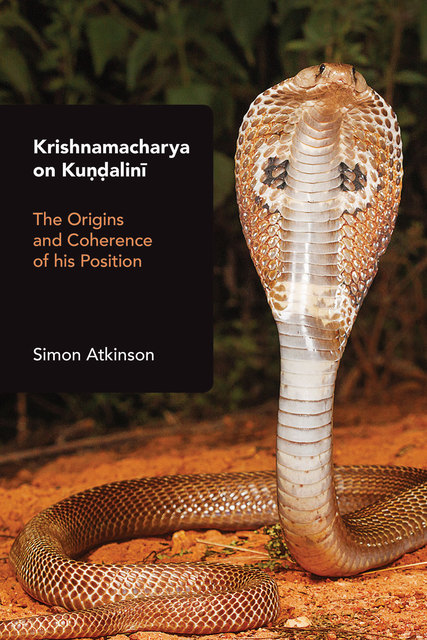Atkinson/Krishnamacharya, 5. The Symbolism of Serpents

Full description
Chapter 5 critically analyses and evaluates claims from two prominent teachers in the tradition, A.G. Mohan and Kausthub Desikachar (Krishnamacharya’s grandson), who both attempted to validate Krishnamacharya’s teachings about the serpent of kuṇḍalinī by putting it into a wider cultural context. Building upon the theoretical framework of Laurie Cozad (2004), this chapter will be the first published work showing how snakes are used in South Asian texts to represent something to be overcome: māyā (illusion / magic), avidyā (nescience / spiritual ignorance), ajñāna (nescience / spiritual ignorance), ahaṁkāra (ego), ahaṁmāna (egotism), abhimāna (erroneous self- conception), māna (pride), and moha (delusion) – the deadly poison of saṁsāra (rebirth). The chapter shows that this stream of South Asian thought, in which snakes represent something to be overcome, is consistent with Krishnamacharya’s use of the term kuṇḍalinī to represent a blockage to prāṇa. However, even when writers use snakes to represent something to be overcome in some contexts, it does not necessarily follow that they use kuṇḍalinī in the same way.
- typeImage
- created on
- file formatjpeg
- file size370 KB
- container titleKrishnamacharya on Kundalini: The Origins and Coherence of his Position
- creatorSimon Atkinson
- isbn9781800501539 (eBook)
- publisherEquinox Publishing Ltd.
- publisher placeSheffield, United Kingdom
- rightsEquinox Publishing Ltd.
- doi
We use cookies to analyze our traffic. Please decide if you are willing to accept cookies from our website. You can change this setting anytime in Privacy Settings.
